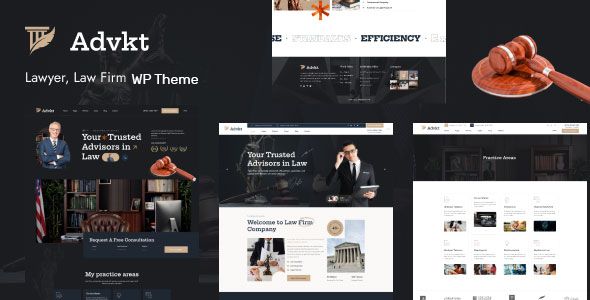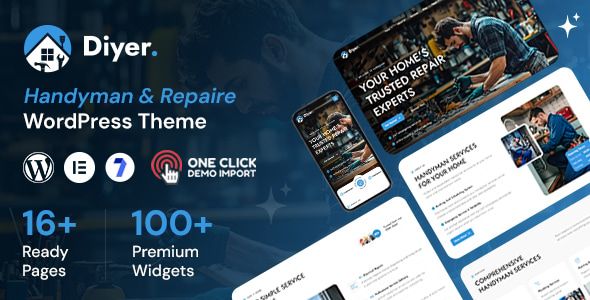Firefront – Fire & Security Services WordPress Theme

- Description
- Reviews
- FAQ

Before we talk icons, layouts, or color palettes, here’s what actually changes your costs and delivery speed: the GPL edition of Firefront – Fire & Security Services WordPress Theme gives you the complete, professional build with the freedom to install on unlimited sites you own or manage, take updates in step with the original release, and keep every feature intact. No domain locks. No “lite mode.” No seat juggling when you spin up a contractor portal for a new region, a vertical microsite for industrial suppression, or a separate site for monitoring services.
If you run a security integrator, fire protection contractor, alarm company, or life-safety consultancy—and especially if you manage multiple brands or locales—this flexibility compounds. One theme. Many properties. Predictable budgets. And a consistent, safety-first user experience across your whole portfolio.
What Firefront is designed to do for real fire & security businesses
Prospective clients rarely browse for fun. They’re looking for assurance, credentials, clear coverage of codes/standards, and a fast path to a quote. Firefront – Fire & Security Services WordPress Theme focuses on five essentials:
-
Instant credibility – Clean typography, calm spacing, and trust elements (certifications, associations, license numbers) that are visible without clutter.
-
Service clarity – Structured pages for fire suppression, sprinkler inspection, alarm design/monitoring, access control, CCTV, intrusion, and emergency lighting—each with scope, compliance notes, and FAQs.
-
Lead flows that convert – Quote forms, quick-call buttons, “Request site survey” CTAs, and job ticket request patterns placed exactly where decision-makers pause.
-
Multi-location logic – Location finder, service-area notes, emergency response windows, and clear dispatch coverage.
-
Performance + mobile fidelity – Fast first paint, stable layouts, and thumb-friendly navigation so facility managers can get answers from a job site or parking lot.
Whether you sell design-build, retrofits, inspections, monitoring, or full life-cycle maintenance, Firefront – Fire & Security Services WordPress Theme gives you an operational website that sounds like a professional and moves like one.
Editing experience: move blocks, not mountains
You don’t need to live in code to make Firefront – Fire & Security Services WordPress Theme feel bespoke:
-
Visual, block-based sections – hero banners, service grids, credentials/affiliations, compliance callouts, case studies, team bios, quote forms, and emergency notice bars.
-
Global style tokens – set your brand red/orange, neutrals, heading/body type, and spacing scale once; everything stays on-brand.
-
Starter content import – spin up a complete outline in minutes: services, industries, locations, contact, careers, and a compliance hub.
-
Reusable elements – “24/7 emergency line,” “Code compliance note,” “Monitoring plan highlights,” and “Our inspection checklist” you can drop anywhere.
Ship a credible first draft by lunch, collect team notes in the afternoon, and publish a lean, lead-ready version by week’s end.
Information architecture that respects how facility buyers evaluate risk
A site that sells safety should feel predictable and direct. This structure works for integrators, contractors, and MSP-style monitoring operations:
-
Home – one-sentence promise, three flagship services, industries served, credential row, recent projects, and a “Request a site survey” CTA.
-
Services (hub) – cards for Fire Alarm Systems, Sprinkler & Suppression, Access Control, CCTV/Video Surveillance, Intrusion Detection, Emergency Lighting & Signage, Monitoring & Maintenance.
-
Service detail – what’s covered, where it applies, codes/standards you work to, deliverables (design, install, test, maintain), typical project timeline, and a targeted FAQ.
-
Industries – healthcare, education, warehousing/logistics, manufacturing, hospitality, multi-tenant residential, retail; each page maps risk scenarios to solutions.
-
Projects/Case studies – photos, scope, standards satisfied, acceptance tests passed, and outcomes (coverage, response time, uptime).
-
Compliance hub – inspection intervals, documentation, impairment procedures, and “What an AHJ will check.”
-
Monitoring – central station overview, signals handled, response workflow, and escalation policies.
-
Locations – coverage map/list, hours, emergency line, and regional licensing.
-
About – team, certifications, safety program, and insurance/bonding notes.
-
Careers – field techs, inspectors, designers, and apprenticeships; training path and benefits.
-
Contact – quote form, emergency number, dispatch hours, and a “Call now” mobile bar.
Firefront – Fire & Security Services WordPress Theme provides patterns for each of these, so you can assemble a coherent IA fast and keep it tidy as you grow.
Service pages that convert (without sounding salesy)
Buyers want specifics. Use this format inside Firefront – Fire & Security Services WordPress Theme to earn trust and get the call:
Above the fold
-
Brief problem statement (“Protect people, inventory, and facilities with code-compliant detection and suppression.”)
-
Two primary CTAs: Request site survey and Speak to an engineer
-
Small trust line: “Licensed · Insured · 24/7 dispatch”
Core sections
-
Scope – design/build, retrofit, expansion, migration, maintenance.
-
Standards & acceptance – which codes/standards you design to; what tests are performed on commissioning; what documentation clients receive.
-
System components – panels, devices, heads, annunciators, pulls, strobes, dampers, extinguishers; keep it clear, not exhaustive.
-
Process – survey → design → install → test → train → maintain (six blocks, one sentence each).
-
Deliverables – drawings/as-builts, device lists, inspection records, impairment procedures, owner training.
-
FAQ – inspection intervals, downtime planning, false alarm reduction, monitoring handoff, repair SLAs.
Sidebar elements
-
Credential badges (licenses/certifications)
-
Industries served
-
“Emergency? Call [number]” micro-banner
This explicit, plain-language structure keeps legal/compliance folks comfortable and gives operations people the details they need to proceed.
Monitoring & maintenance: the quiet revenue engine
Most firms make their margin on the long tail—monitoring contracts and planned maintenance. Build that story clearly with Firefront – Fire & Security Services WordPress Theme:
-
Plan tiers – Basic (annual inspection), Standard (inspection + corrective priority), Premium (24/7 monitoring + quarterly checks + parts coverage).
-
Response windows – e.g., 4-hour on-site for critical impairments.
-
Ticketing – how to open, what to expect, what info helps you dispatch faster.
-
Customer portal – if you offer it, explain what they’ll see: tickets, device lists, inspection reports, invoices.
-
KPIs – average time to clear impairments, first-time fix rate, technician certifications.
Make it obvious that “set-and-forget” is a myth—and that your firm stays ahead of issues.
Visual system that signals professionalism without shouting
Safety is serious work. Your visuals should be calm, clear, and reliable:
-
Color – primary action red/orange for CTAs, slate/charcoal for headings, generous neutral backgrounds.
-
Type – sturdy humanist or geometric sans for headings; highly legible sans for body and tables.
-
Icons – consistent stroke weight; align to a simple grid.
-
Photography – real installations, real techs in PPE, equipment closeups; no chaotic stock collages.
-
Badges & seals – small and tasteful; place near credentials and CTAs, not everywhere.
Set these tokens once in Firefront – Fire & Security Services WordPress Theme and every page will respect your brand’s tone.
Performance & Core Web Vitals (because buyers are often on-site and mobile)
Your next client might be on a weak connection in a plant. Keep the site quick:
-
Responsive images with modern formats; eager-load the hero, lazy-load the rest.
-
Minimal fonts – two families, few weights; preload above-the-fold text to avoid layout shift.
-
Defer non-critical scripts (analytics, heatmaps, chat) so they never block reading.
-
Limit heavy embeds – use short poster frames and open videos in a light modal.
-
Cache + compress across pages; keep CSS/JS payloads compact.
The theme is built for speed; operational discipline keeps it green.
Accessibility & trust (non-negotiable for life-safety)
-
High contrast and sensible font sizes across breakpoints.
-
Keyboard navigation with visible focus states.
-
Clear alt text—describe equipment and locations meaningfully.
-
Plain-language forms with privacy notes and expected response time.
-
Error states that help (“Please choose a preferred time window”).
-
Emergency disclaimers where relevant: this site is not a dispatch line; show the 24/7 number clearly.
Trust is a thousand small choices—make them consistently.
SEO and content patterns that compound quietly
Life-safety search is local and compliance-led. Publish with intent using Firefront – Fire & Security Services WordPress Theme:
-
City + service pages – “Fire Alarm Installation in [City]” with local AHJ notes and inspection cadence expectations.
-
Industry pages – map hazards to solutions (“Cold storage & pre-action,” “Atria and smoke control,” “High-bay warehouses & beam detection”).
-
Compliance hub – inspection intervals, impairment protocols, sample checklists; these pages earn bookmarks and referrals.
-
Case studies – (client anonymized if needed) focusing on scope, timeline, tests passed, and outcome metrics.
-
FAQ clusters – false alarm reduction, retrofit planning, panel migration, remote monitoring handoffs.
-
Schema – organization, product/service, FAQ, and local business details.
Don’t chase gimmicks. Clarity, speed, and real expertise win over time.
Launch checklist (paste into your PM tool)
-
Install Firefront – Fire & Security Services WordPress Theme; import the closest starter.
-
Set global styles: brand color, typography, spacing; upload logo and favicon.
-
Build the core pages: Home, Services (hub), 4 service details, Industries, Monitoring, Locations, Compliance hub, Case studies, About, Careers, Contact.
-
Create two lead paths on every page: “Request site survey” and “Speak to an engineer.”
-
Add credentials & licensing numbers; keep badge usage minimal but visible.
-
Write a 60–80 word compliance note block; reuse it where appropriate.
-
Wire forms to your inbox/CRM; set confirmation messages and response SLAs.
-
Add an emergency notice bar with your 24/7 number and service area.
-
Optimize images; lazy-load below-the-fold media; preload above-the-fold fonts.
-
Test mobile: menu, sticky CTAs, form errors, phone/email tap targets.
-
Publish v1; schedule a 14-day review to tune copy, CTAs, and navigation.
-
In week 3, add two case studies and one city+service page.
Page-by-page guidance
Home
-
Hero: “Design, install, and maintain code-compliant fire & security systems—on time and on budget.”
-
Three flagship services: alarms, suppression/sprinklers, access/CCTV.
-
Industries strip: healthcare, education, logistics, manufacturing, hospitality.
-
Credentials row: licensing, insurance, training.
-
Recent projects: three tiles with scope and acceptance notes.
-
CTA band: request survey / speak to an engineer.
-
Footer: emergency line, service areas, legal.
Service detail (e.g., Fire Alarm Systems)
-
Intro: plain-language scope and outcomes.
-
Compliance: which standards you follow, how acceptance works.
-
Components: concise list with photos or icons.
-
Process: survey → design → install → test → train → maintain.
-
FAQ: top five questions buyers actually ask.
-
CTA: sticky on mobile.
Monitoring & Maintenance
-
Plans: table with response windows and inclusions.
-
Signals: what’s monitored and how escalations work.
-
Reporting: what customers receive and how often.
-
CTA: “Start a maintenance plan” + “Transfer monitoring.”
Industries
-
Risk scenarios per sector and the specific systems you deploy; link to relevant service pages and case studies.
Compliance hub
-
Inspection intervals, impairment procedures, documentation checklists.
-
Keep it practical and free of marketing fluff.
Copy templates you can paste into Firefront today
Hero (one sentence + subhead)
“Protect people and property with code-compliant fire & security systems—designed, installed, and maintained by a team that shows up ready.”
“From initial survey to final acceptance and ongoing monitoring, we keep projects on schedule and facilities in compliance.”
Compliance Note (70–90 words)
“We design and commission systems to current standards and document acceptance tests clearly. After turnover, we provide inspection intervals, impairment procedures, and training so your team knows exactly what to do. Need help coordinating with your AHJ or insurer? We’ll prepare the documentation and be present for walkthroughs.”
Monitoring Overview (60–80 words)
“Our central station handles signals 24/7 with defined escalation paths. Critical impairments receive priority dispatch, and you’ll have a simple way to open tickets, request service, and review inspection reports. Every plan includes access to your records and transparent response times.”
Request Site Survey CTA (2 lines)
“Schedule a no-obligation site survey. We’ll document your current systems, note code gaps, and outline options with clear timelines.”
Case Study Lead (70–90 words)
“Renovation with occupied spaces, tight weekend windows, and a hard deadline. We coordinated phasing, installed new devices, migrated the panel, and passed acceptance on the first visit. The result: full coverage, clean documentation, and no impact to operations.”
Careers page notes (you’ll fill roles faster)
-
Roles: field technicians, inspectors, designers, project managers, warehouse/logistics, apprentices.
-
Training path: certifications you sponsor, ride-alongs, safety program.
-
Tools: vehicles, meters, PPE, software.
-
Benefits: insurance, PTO, overtime policies, on-call rotation details.
-
Apply CTA: short form + resume upload; reassurance about response time.
A strong careers page reduces recruiter dependence and speeds hiring.
Operations cadence after launch
-
Weekly – update case studies/featured projects; rotate a sector on Home; post a short compliance tip.
-
Monthly – add one city+service page and one industry-specific FAQ.
-
Quarterly – refresh project photos, audit CTAs, review service copy for clarity; adjust plan tables based on support tickets.
-
Annually – full content review for standards changes, licensing updates, and contact routes.
Because Firefront – Fire & Security Services WordPress Theme is modular, these updates stay light and predictable.
Extending without bloat
-
Emergency bar only on business-critical pages and mobile sticky header; keep it short.
-
Project gallery with filters by sector and system; limit to high-quality entries.
-
Document library for SDS sheets, data sheets, and owner training PDFs (if you provide them).
-
Client portal link if applicable; otherwise keep post-login tools separate from marketing pages.
-
Chat only if you can staff it; otherwise a clear phone number is better.
If a widget doesn’t clarify or convert, remove it. Minimal beats noisy in life-safety.
Why the “use it anywhere” license matters in practice
Here’s where the GPL benefits of Firefront – Fire & Security Services WordPress Theme become strategic rather than theoretical:
-
Unlimited deployments – main brand, regional subsidiaries, sector-specific microsites (e.g., “Cold Storage Fire Protection”), and a recruiting site—no extra license overhead.
-
Feature parity everywhere – the same sections, forms, and trust patterns across properties make training and maintenance easier.
-
Aligned updates – when the original release improves, you can keep pace across your portfolio without seat activation gymnastics.
-
One-time cost dynamics – predictable budgets and freedom to experiment (campaign sites, event landings, seasonal promos).
For firms that grow by acquisition or geographic expansion, this flexibility pays for itself in months.
Frequently Asked Questions
Q1: What exactly do I receive with the GPL edition of Firefront – Fire & Security Services WordPress Theme?
You receive the full, professional theme with the freedom to install it on unlimited sites you own or manage. You can keep your updates aligned with the original release and you retain the complete feature set—no “lite mode,” no domain lock.
Q2: Is anything missing compared to a typical single-site premium license?
The intent is parity. You keep the page templates, customization controls, demo import, performance-minded structure, and all fire/security-focused components that make Firefront – Fire & Security Services WordPress Theme effective.
Q3: Can I run multiple regional or sector-specific sites on the same base?
Yes. Many operators maintain a master configuration and clone it for regions or industries, changing only branding, contact details, and service-area notes. That consistency speeds up launches and lowers maintenance.
Q4: Will updates overwrite my branding?
Keep design tokens (colors, type, spacing) in the customization panel and deeper tweaks in a child theme where appropriate. Then you can update the parent safely while preserving your look.
Q5: Does Firefront help with complex service navigation (alarms, suppression, access, CCTV, intrusion)?
Yes. The theme ships with modular sections for multi-service firms. You can build clear hubs, detailed pages, and cross-links so buyers never get lost.
Q6: How do I present compliance without overwhelming readers?
Use a short compliance note on service pages with a link to your “Compliance hub.” Keep specifics scannable—inspection intervals, acceptance tests, and documentation—then invite visitors to request a survey.
Q7: Can I add maintenance plans and monitoring tiers?
Absolutely. Use a simple table with response windows, inclusions, and escalation notes. Place a “Transfer monitoring” CTA for clients switching providers.
Q8: How does the theme support performance on mobile for on-site buyers?
It emphasizes responsive images, minimal fonts, and deferred scripts. Keep media lean and you’ll pass Core Web Vitals comfortably.
Q9: What content builds trust fastest for new visitors?
Licensing and certifications, clear service-area details, recent projects with acceptance notes, and honest maintenance/monitoring terms. A visible 24/7 number helps, too.
Q10: Why choose this edition over a one-site license elsewhere?
Because flexibility compounds. Unlimited sites and aligned updates mean you can expand into new regions, stand up sector microsites, and run campaigns without license friction—while keeping UX consistent and professional.
Final thoughts
Firefront – Fire & Security Services WordPress Theme isn’t a generic corporate skin; it’s a practical, lead-driven system for life-safety businesses. It gives you structured service pages that speak to real compliance needs, clear CTAs that fit how facility and operations people actually make decisions, and a visual language that signals competence without shouting.
The GPL edition adds the operational freedom serious operators rely on: unlimited deployments, full features, and updates that track the original release. Launch your core structure—Home, Services, Industries, Monitoring, Locations, Compliance hub, Case studies, Contact—then keep publishing concise, credible content that answers real questions. With Firefront – Fire & Security Services WordPress Theme (GPL edition), the distance between “we need a site that wins work” and “this site is generating qualified conversations” is short—and you control every step.
Q: Do I need a license key?
A: No. All products are Pre-Activated. You can use 100% of the Premium features immediately.
Q: Can I use the One-Click Demo Import?
A: Yes, absolutely! We ensure the demo import feature works perfectly.
Q: Can I use the products on multiple websites?
A: Absolutely. The GPL license allows use on unlimited domains.
Q: Are the files safe?
A: Yes. All files are scanned by McAfee and VirusTotal before uploading.
Share Now!


















